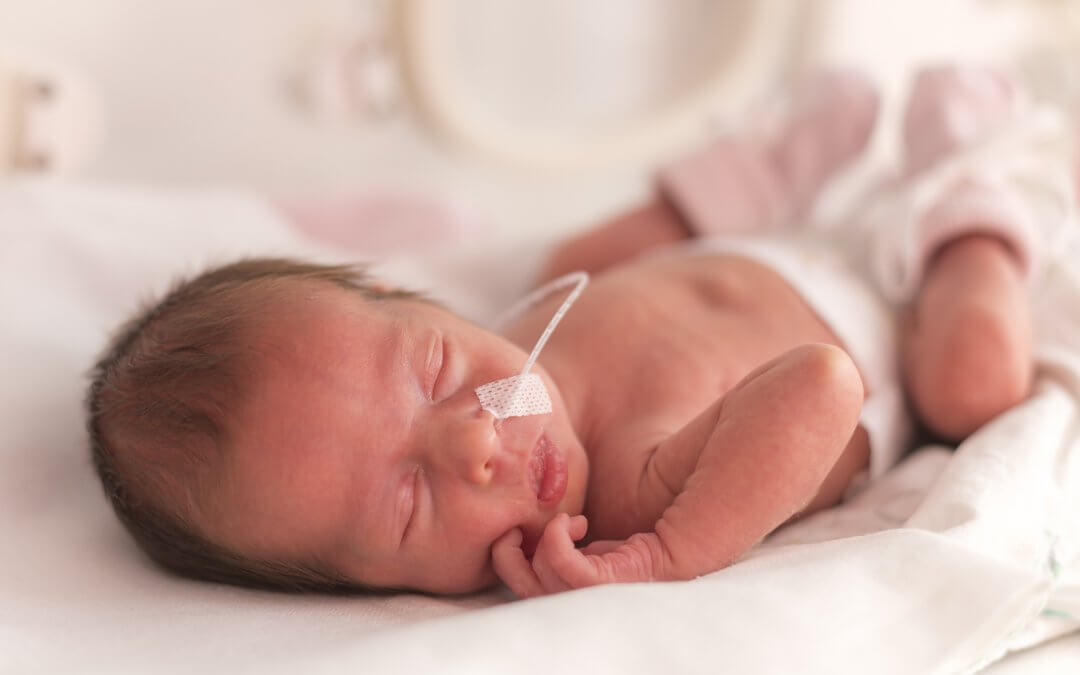A Phase II trial investigating the use of umbilical cord blood mesenchymal stem cells (MSCs) to treat bronchopulmonary dysplasia (BPD) in premature infants has shown promising initial results, giving way to a larger Phase II study, focusing on a subset of babies who looked to have benefitted most from the therapy.
The study found that transplanting umbilical cord blood MSCs into the tracheas of preterm infants at risk of bronchopulmonary dysplasia was feasible and safe. Whilst there was no statistically meaningful difference between the placebo and treatment group on the primary outcomes of mortality or severe/ moderate BPD, subgroup analysis showed significant improvement from 53% to just 19% severe bronchopulmonary dysplasia, in infants born at 23 to 24 weeks who received the MSC transplant. In order to increase the powering of the study, the study team are now conducting an additional, larger Phase II, which will focus on infants born at this gestational age.
This study is another exciting example of the wide range of potential therapies using your baby’s umbilical cord blood, and highlights that it is more than just the haematopoietic stem cells that it contains that could be useful. Co-author of this study, Dr Ellen Ai-Rhan Kim stated “We focused on UCB-MSCs [Umbilical Cord Blood – Mesenchymal Stem Cells], as they exhibit several advantages over adult tissue-derived MSCs, including lower immunogenicity, higher proliferation capacity, paracrine potency and therapeutic efficacy both in vitro and in vivo.”
What is BDP?
Bronchopulmonary dysplasia is a form of lung disease, sometimes chronic, which affects newborn babies, it is most common in premature infants or those with a low birth weight the condition is though to be exacerbated or possibly brought on by prolonged mechanical ventilation to treat other respiratory symptoms2.
How common is BDP?
The earlier a baby is born the more likely they are to be affected by BDP. At 23 weeks, gestation, nearly every baby born will go on to develop BDP; Up to 45% of babies born at 29 weeks or less will develop BPD.3;4
What are MSC’s?
Mesenchymal stem cells are tissue forming cells, which are found in cord blood, cord tissue and placental tissue, as well as adult sources such as fat and bone marrow. MSCs have the ability to transform into the three main tissue lineages – fat, cartilage and bone, which gives them huge potential for use in regenerate medicine. MSCs from your baby’s umbilical cord and placenta and regarded as the most powerful, due to their immune privilege and potency.
How are Stem Cells used in this treatment?
The therapy consists of transplanting MSC’s isolated from cord blood directly into the trachea via a thin catheter. MSCs have a potent paracrine effect that reduces inflammation which may prevent or reduce the severity of bronchopulmonary dysplasia.
Sources:
- https://www.europeanpharmaceuticalreview.com/news/151698/stem-cell-transplantation-may-be-able-to-prevent-major-cause-of-death-in-preterm-infants
- https://www.lung.org/lung-health-diseases/lung-disease-lookup/bronchopulmonary-dysplasia
- https://www.ncbi.nlm.nih.gov/books/NBK262117/
- https://www.asthmaandlung.org.uk/conditions/bronchopulmonary-dysplasia-bpd-children/what-bpd-what-causes-it
- https://www.ncbi.nlm.nih.gov/pmc/articles/PMC4413017/
Request a Welcome Pack
Find out more about cord blood banking by downloading a Welcome Pack now.








